Potřebujeme váš souhlas k využití jednotlivých dat, aby se vám mimo jiné mohly ukazovat informace týkající se vašich zájmů. Souhlas udělíte kliknutím na tlačítko „OK“.
ASTM D7242/D7242M-06(2013)e1
Standard Practice for Field Pneumatic Slug (Instantaneous Change in Head) Tests to Determine Hydraulic Properties of Aquifers with Direct Push Groundwater Samplers (Withdrawn 2022) (Includes all amendments And changes 7/20/2022).
Automaticky přeložený název:
Standardní praktiky pro Field Pneumatický Slug (okamžité změny v hlavě) zkoušky ke stanovení hydraulické vlastnosti zvodní s Direct Push podzemních samplerů
NORMA vydána dne 1.12.2013
Informace o normě:
Označení normy: ASTM D7242/D7242M-06(2013)e1
Poznámka: NEPLATNÁ
Datum vydání normy: 1.12.2013
Kód zboží: NS-37966
Počet stran: 14
Přibližná hmotnost: 42 g (0.09 liber)
Země: Americká technická norma
Kategorie: Technické normy ASTM
Kategorie - podobné normy:
Anotace textu normy ASTM D7242/D7242M-06(2013)e1 :
Keywords:
aquifer, direct push, hydraulic conductivity, pneumatic, slug test, ICS Number Code 13.060.10 (Water of natural resources)
Doplňující informace
| Significance and Use | ||||||||||||||||||||||||||||||
|
5.1 Combining slug test methods with the use of direct push installed groundwater sampling devices provides a time and cost-effective method that was previously not available for evaluating spatial variations of hydraulic conductivity (K) in unconsolidated aquifers. Current research (Ref 5.2 The data obtained from application of this practice may be modeled with the appropriate analytical method to provide information on the transmissivity and hydraulic conductivity of the screened formation in a timely and cost effective manner. 5.3 The appropriate analytical method selected for analysis of the data will depend on several factors, including, but not limited to, the aquifer type (confined, unconfined, leaky) well construction parameters (partially or fully penetrating), and the type of aquifer response observed during the slug test (overdamped or underdamped). Some of the appropriate methods may include Test Methods D4104, D5785, D5881 and D5912. A thorough review of many slug test models and analytical methods is provided in Ref 5.4 Slug tests may be conducted in materials of lower hydraulic conductivity than are suitable for pumping tests. Slug tests may be used to obtain estimates of K for aquitards consisting primarily of silts and clays. Special field procedures may be required. 5.5 The pneumatic slug test provides some advantages when compared to pumping tests or slug tests conducted by other methods. 5.5.1 Some of the advantages relative to pump tests include: 5.5.1.1 No water added to or removed from the well. An important consideration when water quality must not be altered for purposes of environmental sampling. 5.5.1.2 Large volumes of water not removed from the well as during a pumping test. An important consideration if the groundwater is contaminated and will require disposal as a regulated waste. 5.5.1.3 Slug tests usually require only a fraction of the time needed to complete a pump test. 5.5.1.4 No large diameter pumping well or down well pump required. 5.5.1.5 Slug tests provide information on K for the formation in the vicinity of the well. 5.5.2 Some advantages relative to slug tests using water or a mechanical slug include: 5.5.2.1 No water added to or removed from the well or DP sampler to conduct the test. Generally does not change water quality for sampling. Use of vacuum to induce a falling head test could result in loss of volatiles from water in the well column. Additional purging may be required before sampling for volatile contaminants. 5.5.2.2 Pneumatic initiation of the slug test provides clean, high quality data with minimal noise, especially important in high hydraulic conductivity formations and small diameter wells. 5.5.2.3 In small diameter DP tools, inserting a mechanical slug or adding water may be difficult or even preclude accurate measurement of changing water levels. 5.5.3 Some disadvantages of slug tests as compared to pumping tests include: 5.5.3.1 Slug tests provide information on K for the formation only in the vicinity of the well, not a large scale average value as obtained from a pumping test. 5.5.3.2 Most slug test analytical methods can provide information only on aquifer transmissivity and hydraulic conductivity. Pumping test analysis can provide additional information on aquifer parameters such as specific storage, etc. 5.5.4 Some disadvantages of the pneumatic slug test relative to slug tests using water or a mechanical slug include: 5.5.4.1 Airtight seals needed on the well casing or drive rods. 5.5.4.2 The screen must remain below the water level throughout the slug test. Wells screened across the water table cannot be slug tested with the pneumatic method. 5.5.4.3 Pressure transducers and electronic acquisition methods usually required for pneumatic slug testing. Not always needed for manual methods. 5.5.4.4 Equilibration of water level after pressure (or vacuum) applied to the wellhead increases time required to complete the slug test, especially important in low-K formations. 5.6 Direct push methods provide some advantages as compared to conventional drilling methods for the installation of wells and temporary groundwater monitoring devices to be used for slug testing. Some of the advantages include: 5.6.1 DP methods minimize generation of soil cuttings reducing waste handling and disposal costs at contaminated sites during the installation of permanent wells (Guide D6724, Practice D6725) and temporary groundwater monitoring devices (Guide D6001). 5.6.2 Several types of temporary groundwater monitoring devices may be installed by DP methods (Guide D6001). These tools may be installed at various depths and various locations for slug testing and groundwater sampling in unconsolidated materials. Most of these tools are extracted for decontamination and multiple re-use, and can minimize the need for permanent well installations. 5.6.3 Short screens may be used to slug test discrete depth intervals to document vertical and lateral variations of K within an aquifer in a cost and time effective manner. 5.6.4 Equipment required to install DP wells and temporary groundwater samplers are often smaller and more mobile than conventional rotary drilling equipment. This can make site access easier and more rapid. 5.6.5 Other direct push screening and sampling methods, for example Guide D6282 on soil sampling, can be used to detect test zones in advance of slug testing, which helps with knowledge of test location. 5.6.6 Direct push tests are minimally intrusive. 5.6.7 Direct push tests are generally more rapid and less expensive than other drilling methods. 5.7 Some disadvantages of DP methods as compared to conventional rotary drilling include: 5.7.1 DP methods generally provide a smaller diameter bore hole than traditional rotary drilling. This may limit the size of equipment than can be placed down hole. 5.7.2 Direct push tools are designed to penetrate unconsolidated materials only. Other rotary drilling methods will be required to penetrate consolidated rock. 5.7.3 Some subsurface conditions may limit the depth of penetration of DP methods and tools. Some examples include thick caliche layers, cobbles or boulders, or very dense materials, such as high density glacial tills. 1.1 This standard practice covers
the field methods used to conduct an instantaneous change in head
(slug) test when pneumatic pressure is used to initiate the change
in head pressure within the well or piezometer. While this practice
specifically addresses use of pneumatic initiation of slug tests
with direct push tools these procedures may be applied to wells or
piezometers installed with rotary drilling methods when
appropriate.
1.2 This standard practice is used to obtain the required field data for determining hydraulic properties of an aquifer or a specified vertical interval of an aquifer. Field data obtained from application of this practice are modeled with appropriate analytical procedures (Test Methods D4104, D5785, D5881, D5912, Ref (1)2). 1.3 The values stated in either SI units or inch-pound units are to be regarded separately as standard. The values stated in each system may not be exact equivalents; therefore, each system shall be used independently of the other. Combining values from the two systems may result in non-conformance with the standard. 1.4 This standard does not purport to address all of the safety concerns, if any, associated with its use. It is the responsibility of the user of this standard to establish appropriate safety and health practices and determine the applicability of regulatory limitations prior to use. 1.5 This practice offers a set of instructions for performing one or more specific operations. This document cannot replace education or experience and should be used in conjunction with professional judgment. Not all aspects of this practice may be applicable in all circumstances. This ASTM standard is not intended to represent or replace the standard of care by which the adequacy of a given professional service must be judged, nor should this document be applied without consideration of a project’s many unique aspects. The word “standard” in the title means that the document has been approved through the ASTM consensus process. |
||||||||||||||||||||||||||||||
| 2. Referenced Documents | ||||||||||||||||||||||||||||||
|
Podobné normy:
Historická
1.8.2010
Historická
1.10.2006
Historická
1.5.2012
Historická
15.9.2008
Historická
1.11.2005
Historická
15.7.2013
Odebírejte informace o nově vydaných normách ZDARMA:
Chcete pravidelně odebírat informace o nově vycházejících normách z celého světa a to zcela zdarma?
Přihlašte se k odběru. Vše je velice jednoduché a absolutně ZDARMA.
Na výběr máte vydavatele z celého světa.


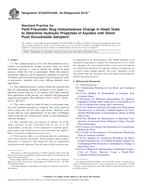
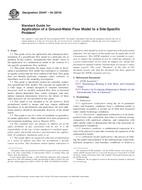 ASTM D5447-04(2010)..
ASTM D5447-04(2010).. ASTM D5473-93(2006)..
ASTM D5473-93(2006)..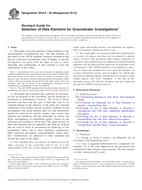 ASTM D5474-93(2012)..
ASTM D5474-93(2012)..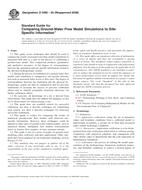 ASTM D5490-93(2008)..
ASTM D5490-93(2008).. ASTM D5521/D5521M-13..
ASTM D5521/D5521M-13..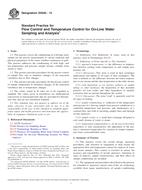 ASTM D5540-13
ASTM D5540-13
 Cookies
Cookies
